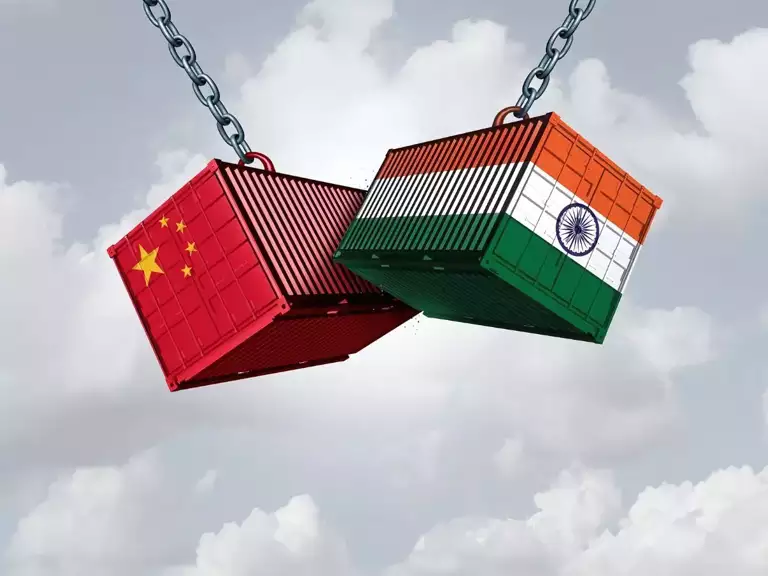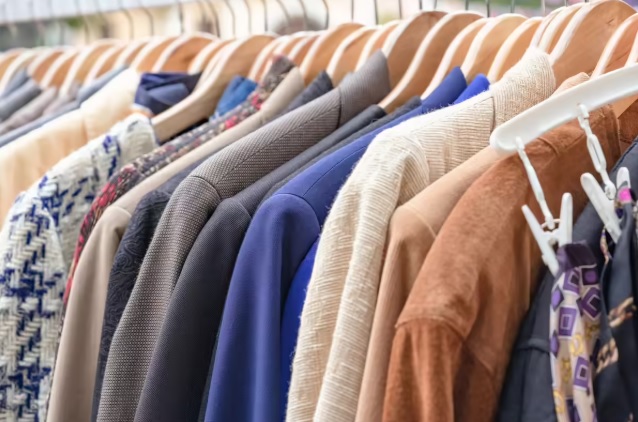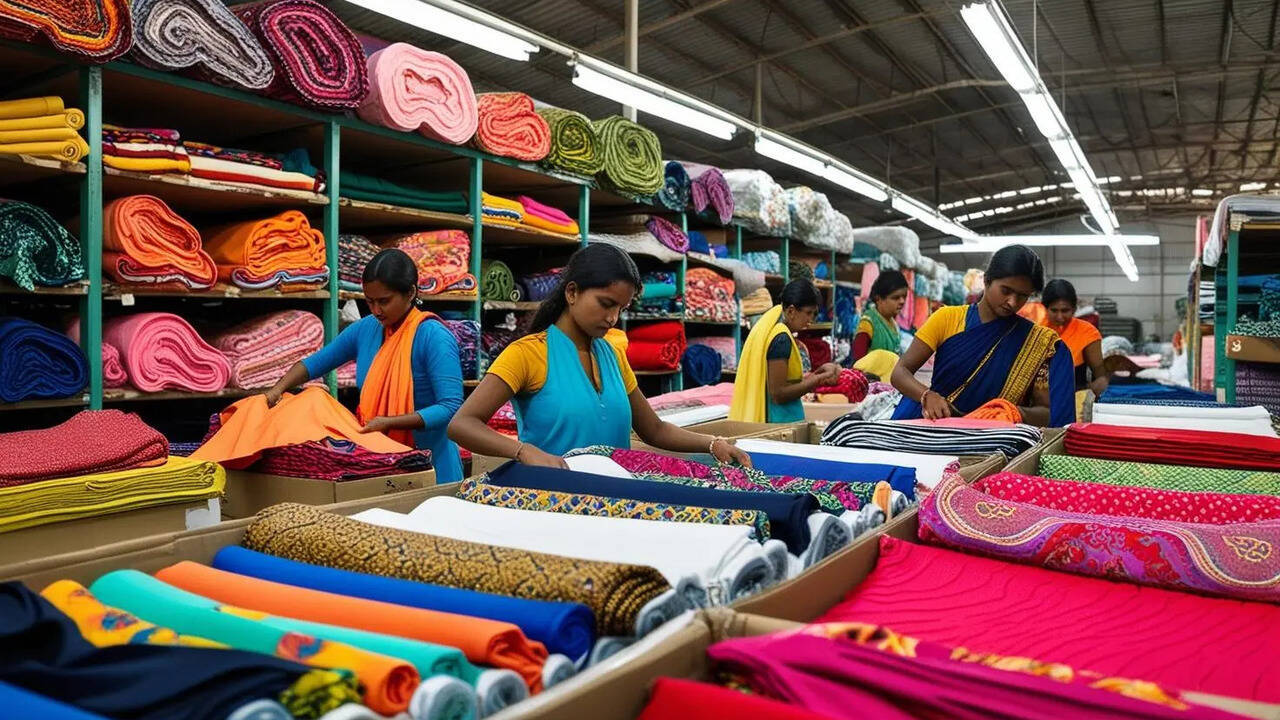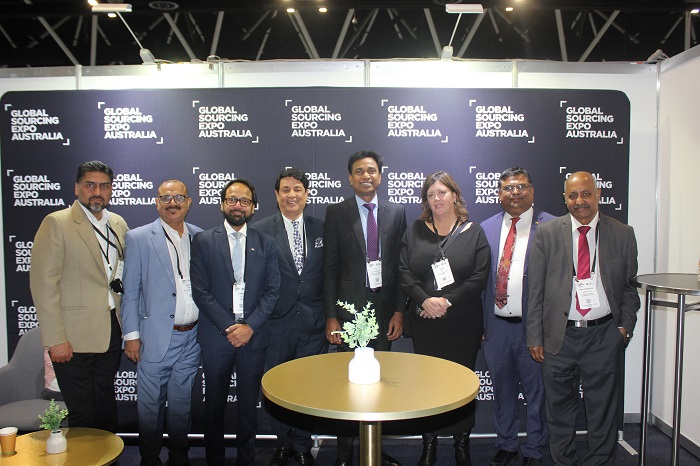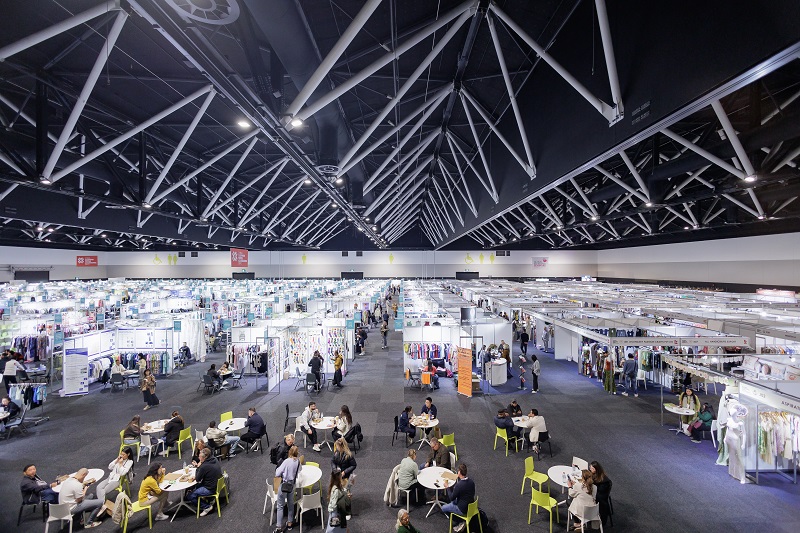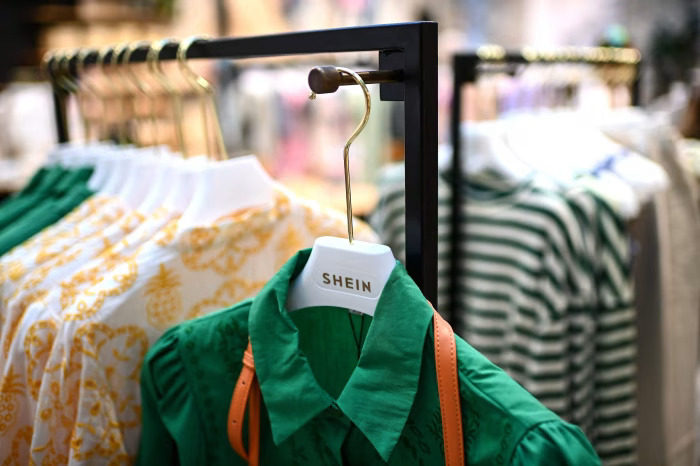FW
"Bangladesh aims to invest $25 million in India to directly reach out to end consumers, which is expected to boost sales to $1 billion from the present $300 million over the next three years. There is a considerable demand for RMG products made in Bangladesh such as trousers, shirts, blouses, skirts, kidswear, cotton nightwear and jeans."
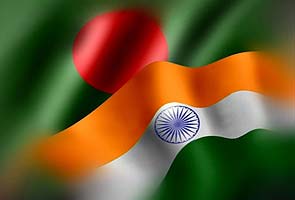
India and Bangladesh are competitors in apparel exports but at the same time trade is improving between these nations as rising number of Indian manufacturer-exporters are looking at setting up factories in Bangladesh. And Bangladesh on the other hand, Bangladesh is exploring the India as a potential growth market.
Trade improves but issues need resolution

Both countries are putting in efforts to improve ties. As Prime Minister Narendra Modi’s visited Bangladesh in June, he committed to look into the request for 50 acres of land either free of cost or at a nominal price in Gujarat to set up an apparel warehouse and Bangladeshi retail stores in the state. Bangladesh aims to invest $25 million in India to directly reach out to end consumers, which is expected to boost sales to $1 billion from the present $300 million over the next three years. There is a considerable demand for RMG products made in Bangladesh such as trousers, shirts, blouses, skirts, kidswear, cotton nightwear and jeans.
However, there are certain issues that the country is concerned about while doing business with Indian retailers. One is devaluation of the rupee against the dollar and second is non-payment of dues by the Indian retailers. For example, since 2011, a total of 22 small and medium exporters of Bangladesh supplied garment products worth $5 million to Lilliput India. However the company could not pay its dues. Another Indian retailer, Aldi too is yet to pay $1.2 million against export proceeds of the Bangladeshi exporters for the last couple of months.
According to the Export Promotion Bureau, Bangladesh, RMG export earnings from India in the first month of the FY 2015-16 decreased to $10.38 million from $14.28 million in the same month of the FY 2014-15 because of such concerns related to non-payment of dues.
Indian mills eye prospects in Bangladesh
Keeping the low labour costs and industry-friendly policies in Bangladesh in sight, Indian mills are planning to either establish their base in the country or provide better service to the growing garment manufacturing industry. Experts say the Bangladesh garment industry imports approximately 40 per cent of woven fabrics, which is expected to increase over the next five years. As of now, the largest portion of imported fabrics from India to Bangladesh is in denim fabric followed by shirting and suiting which includes non-denim bottom wear fabrics. Out of India’s 30 plus denim mills, the top 10 mills are exporting their denim fabric to Bangladesh.
However, there are problems like the trade policy between the two countries. While 48 types of textile products including finished garments from Bangladesh are being sold in India without any duty following the free-trade agreement signed between the two countries, yarn and fabrics exported from India attract duties in Bangladesh. This disparity will certainly affect the domestic garment producers/suppliers, as China too is using the trade route through Bangladesh to dump their products.
After China rolled back its cotton stockpiling policy it resulted in a decline of cotton imports. Indian cotton yarn exporters found Bangladesh as the next big market for exports. According to government estimates, lesser cotton imports by China may lead to as high as 41 per cent drop in shipments from India this year. India expects Bangladesh to increase cotton imports, which could beat the slump in Chinese imports. As of now, Bangladesh buys around 55-60 lakh bales from India.
A global business summit was held in West Bengal, January 8 and 9, 2016. Textiles and clothing were one of the focus industries at this summit. The Apparel and Export Promotion Council for the first time sent a delegation while national and state industry leaders were delegates and panelists. Leading retail chains like V Mart, Lifestyle participated in the deliberations. A roadmap was discussed for making Bengal a major hub for clothing and textiles in the coming five years and increasing its share of Indian textiles from five to 10 per cent. Around 13 textile parks were launched under Project Texpro Bengal. The project would provide industry land, infrastructure, single window clearance, environment compliant infrastructure, power apart from a host of subsides (capital, land, stamp duty, labor, power etc).
Among the associations which participated were the Apparel Export Promotion Council, Confederation of Indian Textile Industry, Federation of Hosiery Manufacturers’ Association of India, Cotton Textiles Export Promotion Council, Clothing Manufacturers’ Association of India, Bengal Hosiery Manufacturers Association, Chamber of Textile Trade and Industry, Eastern India Garment Manufacturers and Exporters Federation, West Bengal Hosiery Association, West Bengal Bleachers and Dyers Association and the Intimate Apparel Association of India.
According to exports figures released by the Bangladesh Garment Manufacturers and Exporters Association (BGMEA),the country's apparel exports to some potential non-traditional markets declined considerably during the first half (H1) of the current fiscal year 2015-16, despite posting an 8.13 per cent growth to all the new markets during the corresponding period of last fiscal.
Exports to Brazil and Turkey dropped by 24.25 per cent and 6.47 per cent respectively. Shipments to China, Japan and Russia recorded a slow growth of 0.40 per cent, 3.99 per cent and 2.16 per cent respectively. However, the total export of ready-made garment (RMG) products to the new markets grew by 8.13 per cent with earnings worth $2.01 billion during the July-December period of the FY '16.
Bangladesh's exports to the new destinations witnessed more than 20 per cent growth from FY 2011-12 to FY 2013-14. The new emerging markets included Australia, Brazil, Chile, China, India, Japan, Korea, Mexico, Russia, South Africa and Turkey. Knit products export to Brazil, China, Russia and Turkey fell drastically by 36.79 per cent, 16.95 per cent, 8.21 per cent and 4.85 per cent respectively during the first half of the current fiscal compared to that of the corresponding period of last fiscal, data revealed.
Similarly, woven products export to Brazil also witnessed a 6.22 per cent decline, 0.18 per cent to India, 5.16 per cent to Japan and 7.10 per cent to Turkey during H1 of FY 16.
Industry experts are of the opinion that the sector’s dependency over cotton-based products and lack of effective efforts for product diversification and new market exploration as well as shortage of specialised skilled workforce, poor infrastructure and entrepreneurs' unwillingness to take risk are some of the factors responsible for the limited product exports.
www.bgmea.com.bd
El Nino could have a major impact on how much cotton world’s farmers produce in the coming year. The United States could see plantings increase from 8.6 million acres to a little over 9.1 million acres in 2016.
A mild El Nino would reduce world cotton area by 1.5 to 2.5 per cent in 2016. World production would rise 1.5 per cent and yields will rebound. World consumption would rise and world ending stocks would decline 7 to 8 per cent. World ending stocks would fall below 100 million bales to somewhere around 97 million bales. This would be the first time since 2012 that ending stocks would be below 100 million bales.
A very strong El Nino would bring world area down 1.5 to 2.5 per cent. World production could fall to 96 to 98 million bales as yields could be impacted. World consumption could be up a little bit, and if world consumption goes up and production goes down, world stocks could drop below 90 million bales.
The current El Nino pattern, which is the term used to describe a warming of the water in the Western Pacific, is the strongest in recorded history for the October, November and December periods. Its size is put at six million square miles.
Invista’s brand Cordura’s latest innovations include the Denim Alchemy collection, the Reinforcement series and the 4Ever Fleece. The Denim Alchemy collection offers outdoor enthusiasts with lightweight performance denims, offering high stretch, quick-dry and temperature regulation capabilities. The fabrics combine the legendary durability of Cordura fiber technology, softness of lyocell fiber as well as moisture management, thermal regulation, and innovative stretch functionality to help break through winter’s chill without sacrificing mobility and style. Denim Alchemy features high tenacity nylon combined with exotic blends of polypropylene, viscose, and elastomerics.
The Reinforcement series takes rugged adventure to new heights, offering enhanced wearer protection. Featuring flex, UV-fade resistance, moisture-wicking, non-slip and hi-viscose properties in its woven constructions, the Reinforcement Fabric collection offers a menu of abrasion resistant layers designed for today’s outdoor and urban adventurer alike.
Cordura’s 4Ever Fleece consists of durable soft comfort performance knits and fleeces. It includes hoodies and stylish jogging pants for both men and women. The collection caters to the athleisure trend and helps today’s consumer move from an office chair to a yoga mat or even a rock face. The collection is designed to provide added wearer comfort and help reduce the limitations encountered in active outdoor pursuits.
www.cordura.com/
Rick Helfenbein will be the president and CEO of the American Apparel & Footwear Association. Right now he is the chairman. He’s an experienced apparel and footwear executive. For the past 16 years, Helfenbein has directed the US operations of the Hong Kong-based apparel and footwear giant Luen Thai and was one of the key executives that helped grow the company into the largest publicly listed apparel, accessory, and footwear manufacturer on the Hong Kong exchange.
He has had extensive experience in US apparel manufacturing, textile mills and Central American sourcing. Helfenbein holds a degree in economics from Wharton. He lectures frequently on the subjects of supply chain and international trade at industry events, and prestigious business schools including Wharton, Harvard, Cornell, and Columbia.
During his time on the AAFA board, he helped secure several legislative victories including the passage of the Generalized System of Preference update legislation, the first significant change to the GSP program in 40 years. He has also been active in promoting AAFA’s global presence, appearing several times on national television with commentary about international trade and other industry related issues. As AAFA president and CEO he will continue the fight to expand and protect opportunities for all its member companies.
https://www.wewear.org/
After the success of its first Source India Programme held at Hotel Grand Hyatt, Mumbai in 2010, the Synthetic and Rayon Textiles Export Promotion Council (SRTEPC) has now decided to organise the second edition under the MAI scheme - an exclusive Buyer-Seller Meet in Surat inviting buyers from Asia, the Middle East and Gulf, Africa and South American countries. The event will be held on August 13 and 14, 2016 at Hotel Grand Bhagwati, Surat.
The objective of holding the Mega Export Promotion Programme in Surat is to showcase Surat as the leading centre of production of synthetic fabrics in India and to highlight the Council’s initiative of ‘Focus Surat’ to further develop this thriving textiles centre as a hub of production and exports of synthetic fabrics in India. The event is primarily aimed towards aggressive selling of Indian man-made fibre textiles to leading apparel and textiles buyers in Asia, the Middle East and Gulf countries as well as Africa and South America.
The Buyer-Seller Meet will be widely publicised by the Council to attract leading foreign buyers. The buyers will be identified and selected by the Council with expert help and active guidance of the respective Indian Missions in each country and with the assistance of the foreign textiles and clothing trade bodies and chambers.
Buyers from United Arab Emirates, Saudi Arabia, Bangladesh, Sri Lanka, Vietnam, Afghanistan, Poland, Australia, United Kingdom, United States, European Union, Cambodia, Iran, Indonesia, Malaysia, Myanmar, Thailand, Kazakhstan Egypt, Ethiopia, Sudan, Nigeria, Morocco, Turkey, Peru, Colombia, Brazil, Guatemala, among others are being invited to make this event a success. Representatives of the leading international apparel brands and their buying houses of international repute based in India and abroad, and others connected with the import of textiles including the leading apparel manufacturers in India will also be present at the Buyer-Seller Meet to discuss and firm up business deals. Fashion shows will also be held to showcase ability of Indian fabrics/made-ups for the fashion needs of Asia, Middle East & Gulf, Africa and South America.
The Council proposes to select more than 100 member-companies of different product groups including suiting, shirting, made-ups, home textiles, dress materials, saris, yarn and fibres on a first-come-first served basis for participation in the Buyer- Seller Meet.
www.srtepc.in
Birla Cellulose, which is currently spearheading a unique initiative called LIVA Accredited Partners Forum (LAPF) to scale up the textile value chain, will now kick off a joint marketing drive to increase reach of its partners at the international markets.
“We will help the LAPF partners to promote their products at the international level by enabling them to take part at different marketing fora, apart from helping them with design developments and technology,” said Manohar Samuel, President, Marketing and Business Development at Birla Cellulose. He was talking at the LAPF conclave organised as part of the ongoing efforts to help the partners reach out directly to the leading women’s wear exporters and international brands.
After launching the LAPF to aggregate the top talent in the fabric industry, Birla Cellulose has roped in leading players like Shreeji, Mafatlal, Mercury, Karuna Tex, Svarn Tex, MI Industries, VSM among its 250 plus partners. Apart from enabling the LAPF partners to join the international marketing fora, Birla Cellulose will provide them chance to promote their products through special drives like Market Week and Mill Week, to be held abroad.
The company recently gathered LAPF partners and international brands at Delhi NCR. The initiative was held in collaboration with the Society of Noida Apparel Export Cluster. Around 40 LAPF partners showcased their innovations in LIVA fabrics to 160 garment exporters, including international brands such as Marks & Spencer, Macys, and GAP, apart from Shahi Export, Orient Craft, Pearl Global and Richa &Co. Top buying house such as Triburg, Impulse, LI Fung, and Asmara, domestic brands like Biba and ITC were also present.
The conclave also saw the unveiling of LIVA Spring Summer 2017 Collection with innovations like modal knitted slubs, modal denim, lurex embellishments in LIVA blends and modal yoga wear. The LIVA SS’17 would be showcasing the collection under two unique themes called Tropical Trails and Leisure Luxe.
www.adityabirla.com
With production and labour in China getting costlier, Western countries have turned their attention to Bangladesh for their denim requirement. Ability to produce bulk inventories at a cheaper rate and manufacturers realising the need to improve their supply chain to offer better quality has made Bangladesh one of the strongest denim destinations.
Data released by the US Department of Commerce suggests that Bangladesh stands at the third position as the largest denim exporter to the US after Mexico and China with an 11.3 per cent market share and industry estimates point out that the country also exports denim products worth more than $500 million to Europe every year.
According to the statistics released by BGMEA, the country registered a double-digit growth in the first half of 2015 in denim exports to the European Union, shipping denim products, especially trousers, worth €529.53 million to the EU during January to June 2015, marking a 23 per cent growth compared to the same period last year. All major retailers and brands including H&M, Levi’s, Uniqlo, Nike, Tesco, Wrangler, s.Oliver, Hugo Boss, Puma, Primark, JCPenney and C&A import their denim stocks from Bangladesh.
www.bgmea.com.bd
TRENDSPOTTING 2016: "While China continues to dominate the global market as the sourcing hub, a few international treaties and initiatives like TPP, AGOA, EU -Vietnam FTA etc, is expected to change the global sourcing landscape and new power centres are bound to emerge. Industry forecast suggests the market growth rate of developed countries will slowdown and big emerging economies like China, India will be the key driver of growth."
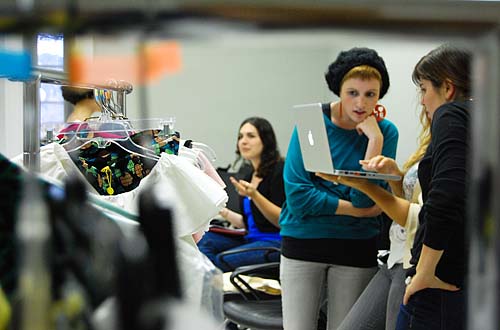
Trade treaties change the game

While China continues to dominate the global market as the sourcing hub, a few international treaties and initiatives like TPP, AGOA, EU -Vietnam FTA etc, is expected to change the global sourcing landscape and new power centres are bound to emerge. Industry forecast suggests the market growth rate of developed countries will slowdown and big emerging economies like China, India will be the key driver of growth. Even though dramatic sourcing shifts are unlikely in near future and China is likely to dominate, optimism hinges on potential opportunities from various international trade deals in the long term. “Although apparel imports from China into the US have remained largely flat, we are seeing a slow but steady shift away from China as businesses look to position their supply chains to take advantage of the forthcoming trade deals. Many vendors are looking at Vietnam due to the potential benefits from TPP (the Trans-Pacific Partnership),” explains Colin Browne, VP and MD of Asia Product Supply at VF Corp.
Explaining the long term impact of AGOA , Browne he says, “From a geographical perspective, sub-Saharan Africa is finally becoming a reality, especially now that AGOA has been extended. We are seeing an increased number of vendors visiting the continent and a number of deals being done. It will be a long time before it rivals the Asian supply base, but the size and availability of resource will allow it to become a dominant player over the next 25 years. As brands venture into such new markets, doing so with known and trusted factories or partners will make the journey less arduous and reduce risk to both parties. These deep, symbiotic relationships will be key to long-term success.” His opinion is reiterated as KL Lee, vice chairman of Esquel Group as he points out that after TPP conclusion in October, there are even more questions as to whether China will lose its leadership position in textiles and apparel. For those who continue with the old ways of manufacturing and not transforming, there is no choice but to move operations to the so-called ‘low-labour-cost’ countries. Esquel is pursuing a different approach: with innovation and using technology in the form of automation and process improvements, they will increase productivity and therefore reduce unit labour cost while improving quality consistency. So while Esquel’s workforce will earn more by sharing the company’s economic success, the company can remain competitive. Of course, Esquel is not only in China as it has facilities in Vietnam and Malaysia that stand to benefit from TPP.
Also as developed countries such as US, EU and Japan are focusing solely on highest-value stages of textile and apparel value chain, that are designing, marketing and distribution while manufacturing activities are concentrated in China, India and other developing countries such as Bangladesh, Vietnam, Pakistan, Indonesia, etc. Rick Helfenbein, President of TellaS Luen Thai (USA), and chairman of the American Apparel & Footwear Association (AAFA) opines the sourcing landscape is unlikely to shift dramatically in 2016. China may dip down a few notches, and Vietnam will move up, but the two combined will still hold nearly 49 per cent market share of the US apparel business. In fact, the top five countries – China, Vietnam, India, Bangladesh, and Indonesia – will likely have a 65 per cent market share of the US in 2016. The best strategy continues to be optimisation of the supply chain with a focus on price, quality, and speed to market.
Lack of sustainable environment a bug bear
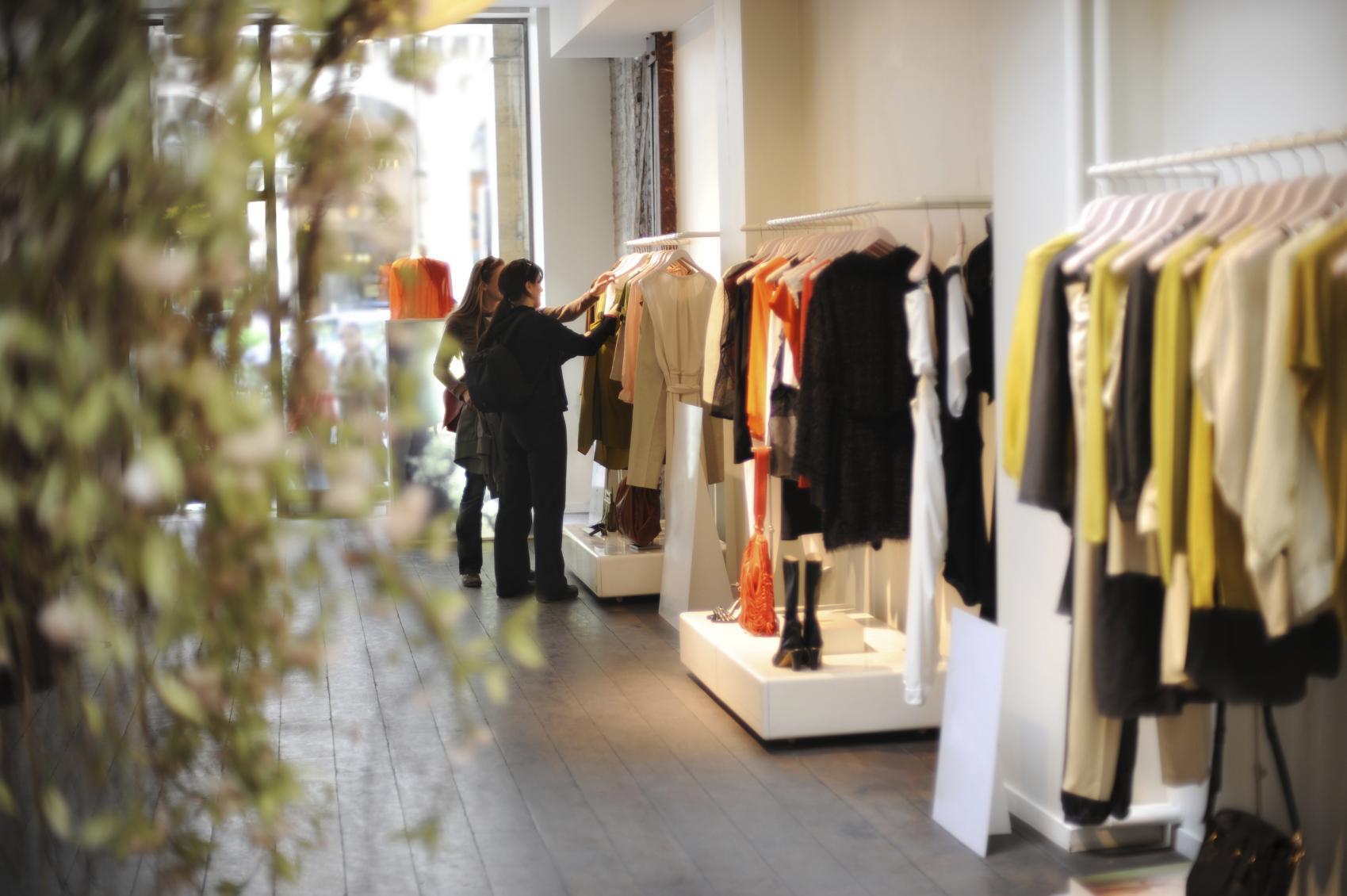
Improving productivity and collaboration across the entire demand chain are also seen as key. From a sustainable investment focus perspective on the opportunities and risks in the supply chains and challenges in the procurement activities from developing countries continues to be a crucial factor the major textile and apparel players. Issues like disparity in wages, lack of basic human rights, child labour, strikes, unhygienic work infrastructure, exploitation of women labourers, safety hazards are rampant in the developing countries which is creating a major hindrance in the consolidation of global supply- value chain.
An Accenture and the World Economic Forum report, highlighted that while a business case can be made for improving conditions, human rights frameworks lay out an obligation on corporations to make sure every worker in their supply chain is paid a living wage, trumping other considerations. Garment workers in Bangladesh make merely 0.6 per cent of a EUR29 product in total earnings, well below the living wage, a recent report has found. In Bangladesh, many garment workers have to work 14-16 hours shifts each day (most often six days per week). In Pakistan, workers have to work 10 or more hours a day. In Thailand, during peak season, excessive overtime is common as factory owners are reluctant to hire additional workers. Unsafe working conditions continue to be a problem ot only in Bangladesh, but also in many developing countries. Often, workers face unsafe, cramped and hazardous conditions at work which can lead to health problems of the workers and to dangerous situations in the factories such as fires and collapses.
Trade Unions (TUs) have the potential to play an effective role in solving disputes between workers and employers. In many countries, internationally guaranteed rights such as the right to organise are highly restricted. Hence, many TUs are often tightly controlled, yellow unions exist, and TU members may be arbitrarily dismissed, detained or sometimes threatened with their lives. (e.g. in Cambodia 115, Pakistan116). In these cases, the potentially helpful role of TUs is diminished. However, international trade laws, United Nations are increasingly reinforcing the basic rights for the workers and determining the basic wages but in various places the local Governments are reluctant to implement them strictly to keep low production cost and maintain the market dominance.
Paul Forman, Group Chief Executive, Coats Plc says “In terms of strategies the importance of knowing your supply chain cannot be underestimated, wherever in the world it is. Ethical sourcing and corporate responsibility is increasingly becoming a competitive advantage for industry players. Consumers quickly punish weak unethical behaviour and increasingly reward outstanding performance, so there must be continued improvements in standards worldwide. The sourcing landscape is increasingly as much about the 'who' and the 'how' as much as the ‘where’.”
Future claims for responsible sourcing
It seems a good cost/benefit ratio was perfectly adequate for the successful procurement of textiles and clothing in the past, but now a whole range of other factors have to be taken into consideration, both on the sales and procurement market front including speed of innovation, volatility of demand, more effective product differentiation (e.g. by region) and, last but not least, the higher social and environmental standards in production expected by customers. Further, in the socio economic dimension, the management of supply chain is increasingly focusing on the procurement of raw materials, particularly cotton and leather), product safety (including the use of hazardous substances), and the carbon footprint of products, in the garment industry, about a quarter of CO2 is produced during raw material production, and half during the garment manufacturing process. Finally, it is to be seen whether and how sustainable procurement policies and potentially controversial aspects of the supply chain can have a positive or negative impact on enterprise value. Although environmental aspects are become increasingly important, the focus still tends to be on the social dimension at present.



